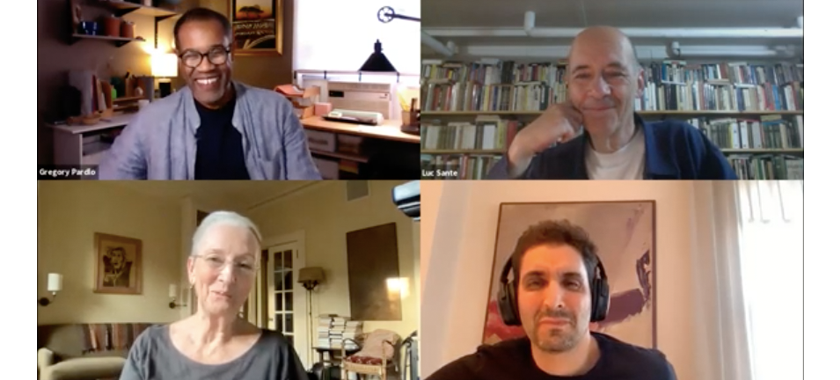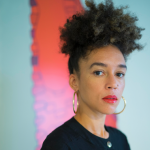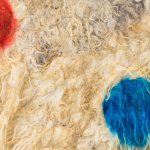Conversations | The Role of the Artist in Uncertain Times
NYFA affiliated artists Kathleen Chalfant, Gregory Pardlo, and Luc Sante tackle the topic in a conversation moderated by Board Member Saïd Sayrafiezadeh.
From activist to observer, from aesthetician to reporter, what precisely is the role of the artist in shaping—and responding to—social and political challenges in the United States and the world? Short story writer and NYFA Board Member Saïd Sayrafiezadeh (Fellow in Playwriting/Screenwriting, ’96, ’06; Fiction ’10) recently posed this question to Tony-nominated actress Kathleen Chalfant (NYFA Artist Advisory Committee), Pulitzer Prize-winning poet Gregory Pardlo (Fellow in Poetry ’05), and noted author and critic Luc Sante (Fellow in Nonfiction ’14) in a conversation held as part of NYFA’s 50 Year Anniversary Talk Series. See below for excerpts from their conversation.
Saïd Sayrafiezadeh: Does all of our work speak to the historical moment?
Gregory Pardlo: Every utterance is an argument toward beauty. We are all in this conversation about what constitutes beauty, so in that regard I think all creative work is political. If there’s something different about this moment (probably not), but I’ll hazard the suggestion that what I do notice is that so much is about our aesthetic landscape. So I think about the Black Lives Matter plazas, painting the street, the conflicts over our statues or memorials. So I think there’s a lot about not only who we are, what ‘we’ looks like in the abstract, but also about what ‘we’ look like in the concrete.
Kathleen Chalfant: I think that’s true, and I think that in this year, people have understood the importance of art in their lives. Because people have lived watching the television, and they’ve been watching drama made on the television—some of it wonderful, some of it not wonderful—but all of it doing what Greg’s talking about trying to make beauty and order out of the world. And I think that artists are always by definition political because we are illuminating and speaking to the world we live in. It’s true that the thing that’s made might endure and change over time. My favorite example of that is when people go on and on about political theater and propaganda, and you just point out that the entire oeuvre of Shakespeare was Elizabethan propaganda. The particular political points don’t matter to us, but the plays have survived. The fact that Richard III is a tissue of lies—from a historical point of view—doesn’t seem to have negated its importance as a work of art.
Artists are always by definition political because we are illuminating and speaking to the world we live in.
-Kathleen Chalfant

SS: Is there any danger to speaking to the historical moment? As an artist do we always have the perspective of it?
Luc Sante: If you’re sufficiently conscious, what you do will be relevant. Of course, it may not be relevant tomorrow, it might be relevant next year, but nevertheless it is the concentration of emotional and intellectual energy that’s shaped by the moment that goes into what you say.
GP: As a student, I had to train my mind to think around an awful lot of the literature that I was being fed, because I didn’t see myself present in it, and I didn’t see a world that acknowledged my presence in it very often. And so I had to make adjustments, and I became very practiced in looking at texts from different perspectives that recognize the value and get something out of it. So I think when I’m teaching, my students will come to a text thinking there is a particular, authoritative way that a text should be read. I think that is horribly unfortunate, and it results in these very limited readings. I want to make a case against the idea that there is a universal reading of any particular text. There is not a universal way of means of interpretation, there isn’t an authoritative perspective on anything and so we should be thinking about not only works from the past, but the work that we’re producing now in multiple ways.
KC: The canon I grew up reading didn’t speak to me. My example always was ‘I never knew anybody who read Tom Sawyer and identified with Becky Thatcher.’ The notion of broadening the canon is important for everyone…everyone. It doesn’t limit the possibilities, it expands the possibilities.
LS: Also, a canon exists to be trampled on. You know, that’s the thing. You’re building the next generation’s walls.
GP: The thing that is particularly troubling me right now is the effort to suppress certain readings of American history, right, and this effort to impose a very particular interpretation of who we are. And I take that as not only an attack on intellectual freedom, not only an attack on creativity, on imaginative freedom, but an attack on free speech, generally. If there is any belief that legislation can dictate the way history is written and told, the one place I think we have the least possibility of being policed outside of violence is in the arts, because there is such a broad range of ideas that can go into a creative expression. You can’t really parse it down to a single message. That’s the thing that excites me so much about what we do.
If there is any belief that legislation can dictate the way history is written and told, the one place I think we have the least possibility of being policed outside of violence is in the arts.
-Gregory Pardlo

Audience Question: How do you think artists will speak about this unique moment in the time that we are living in? What lens or perspectives will be most effective for telling these stories?
GP: That’s the perennial question; we’re asking that every moment that we’re creating. That’s the type of question that critics try to answer in retrospect. The one thing I will say is that I am trying to explore as many perspectives as I can imagine. I’m trying to make legible what my cultural assumptions are, what I take for granted, and am trying to bake that into the work.
LS: When you get to be a certain age, you realize a couple of things. One is that you may not be up on the specifics of ‘the moment.’ A lot of stuff happens very fast now, and it happens online and I’m necessarily not too swift about it because of my aged condition. But, on the other hand, the struggle, the basic stuff, struggle with an ‘s’ at the end, multiple struggles, they’re really the same ones that have been true since I was a youth. A lot of things I address in my books are as true now as they were when I was 20 as they were before I was born.
-Amy Aronoff, Senior Communications Officer
The “Artists in Times of Crisis” conversation was presented as part of our 50 Year Anniversary Talk Series, a series of talks on issues impacting artists today. Next up, we’ll sit in on Julie Taymor and Mira Nair discussing their experiences breaking into the film industry and screen a full showing of Swoon’s Cicada stop motion animation.
Interested in supporting NYFA? Click here to donate. Sign up for NYFA News and receive artist resources and upcoming events straight to your inbox.





